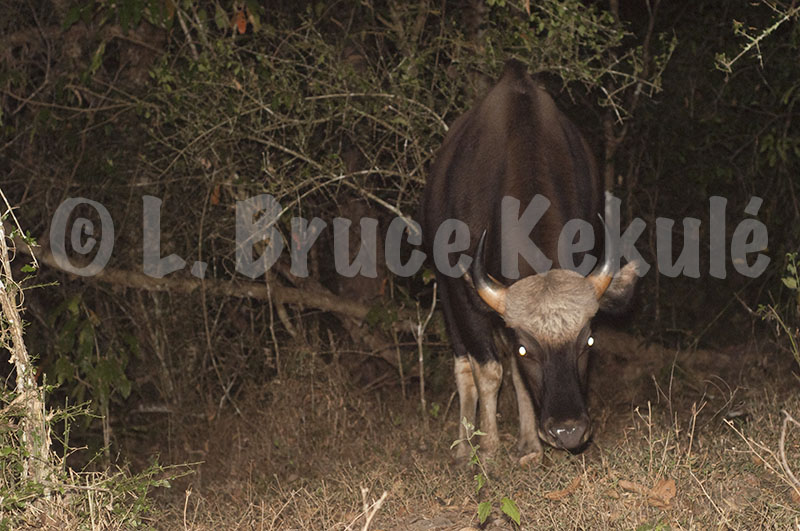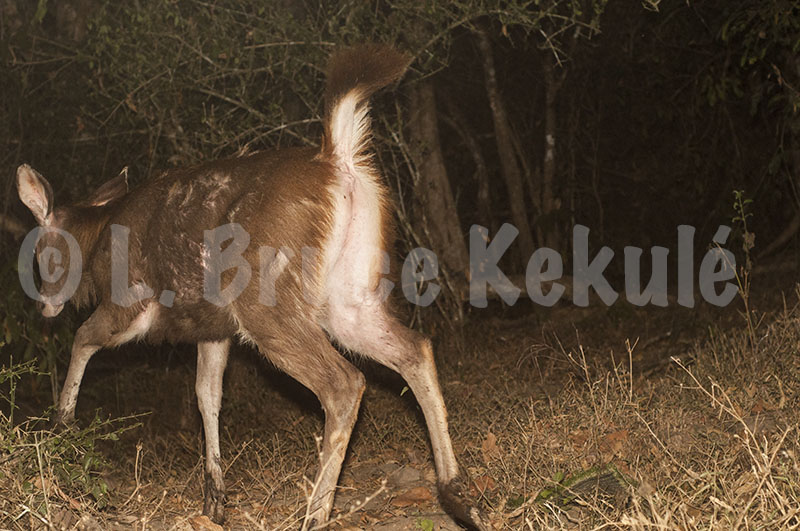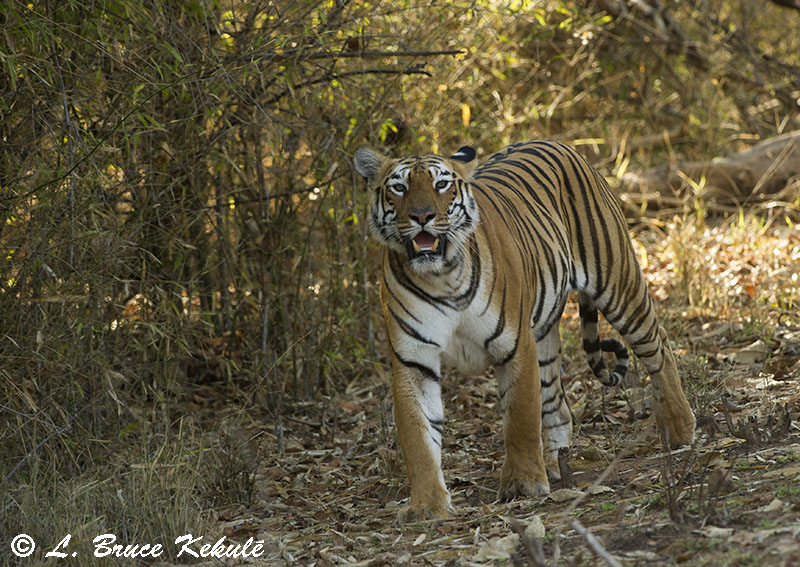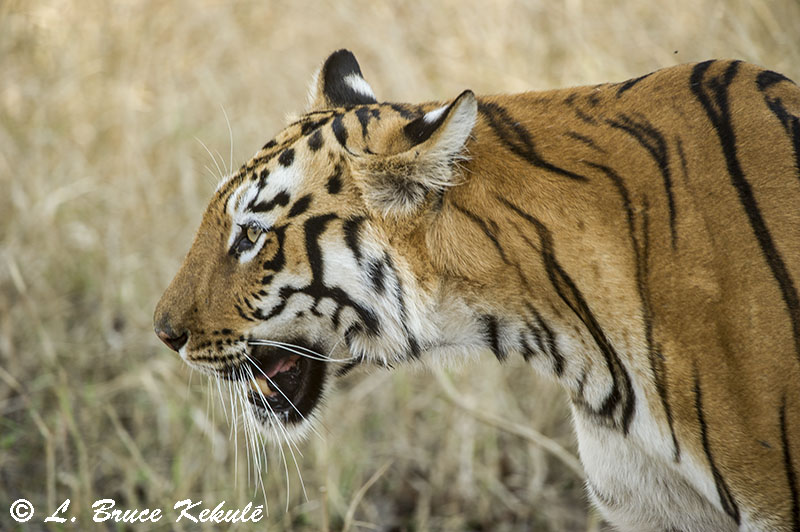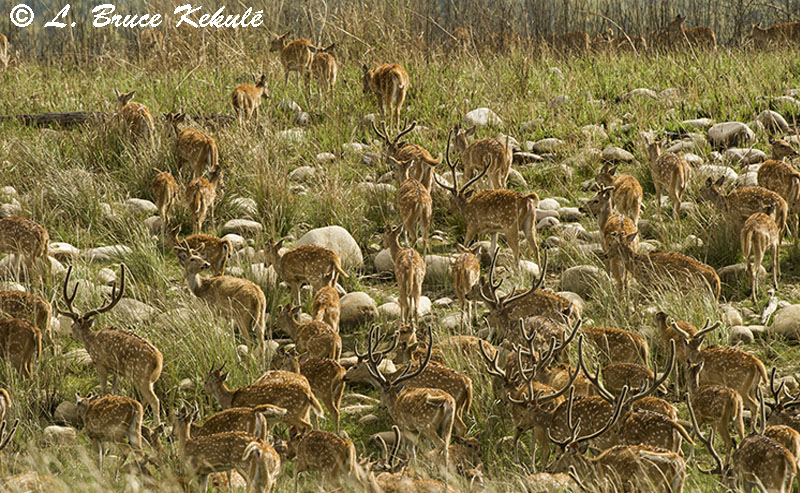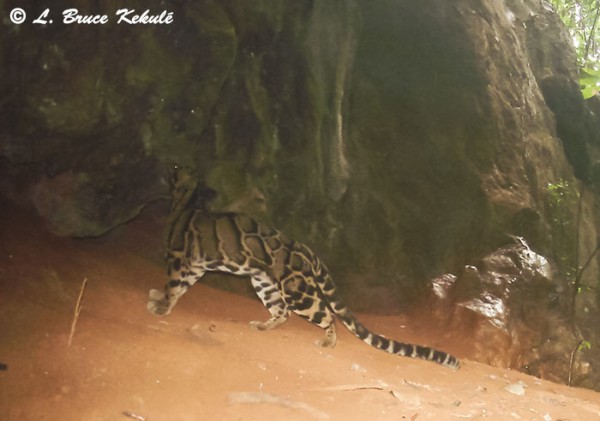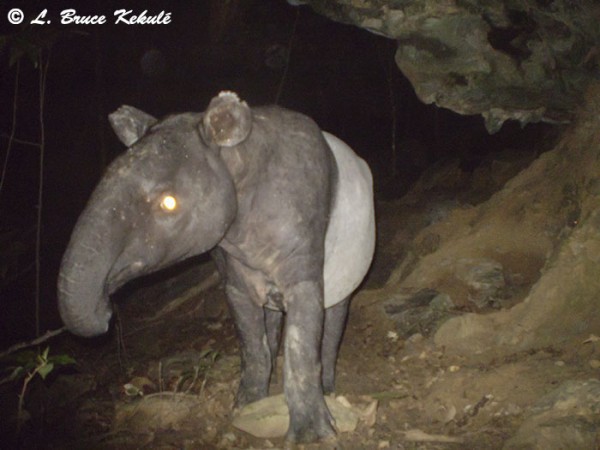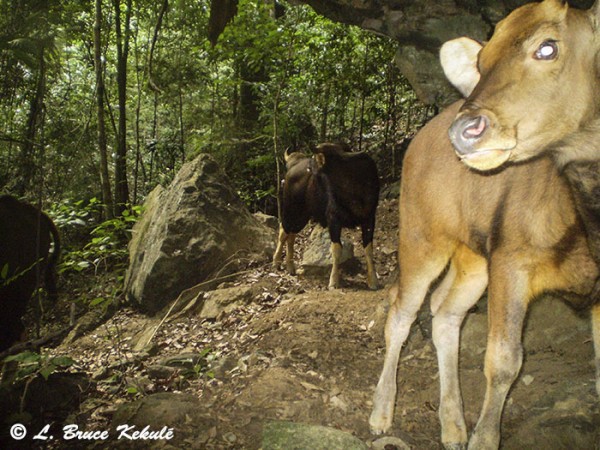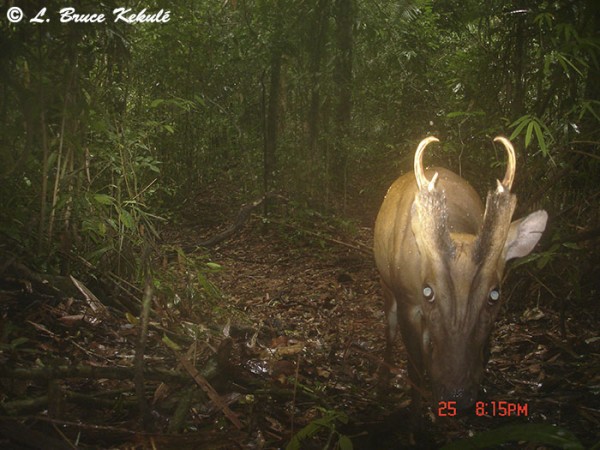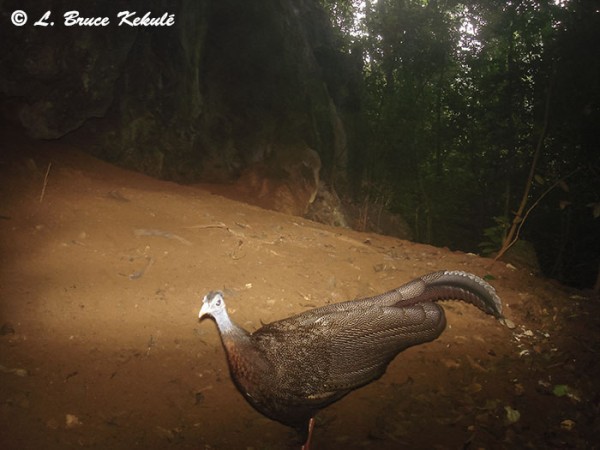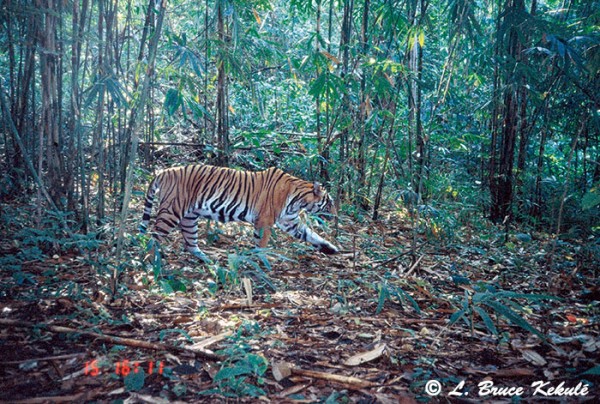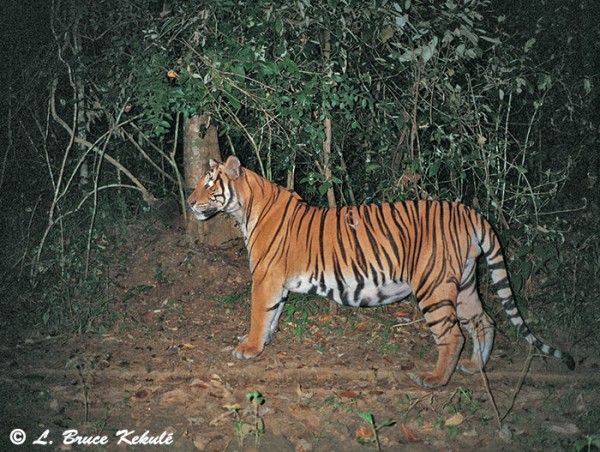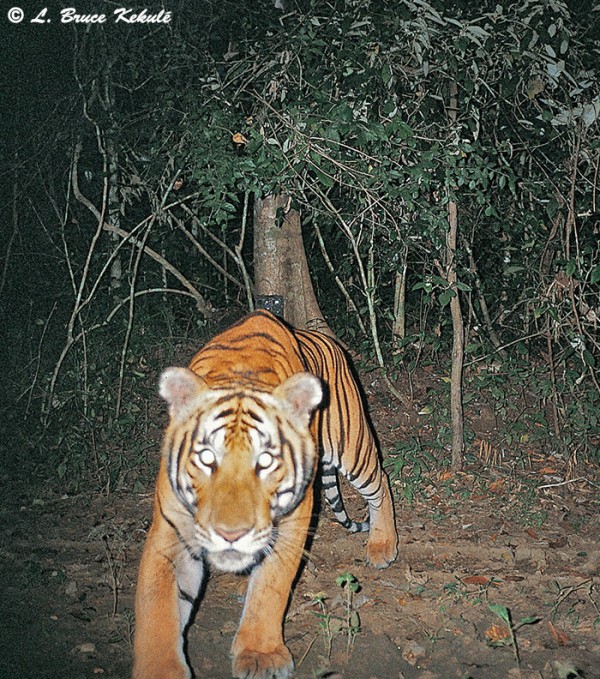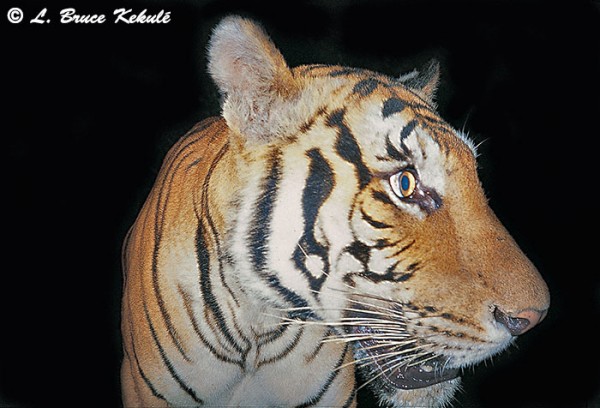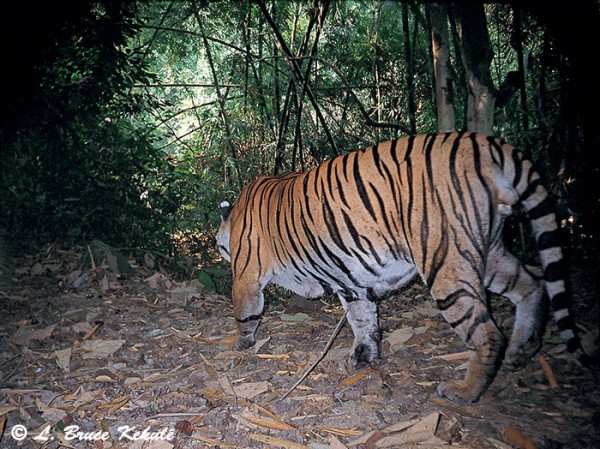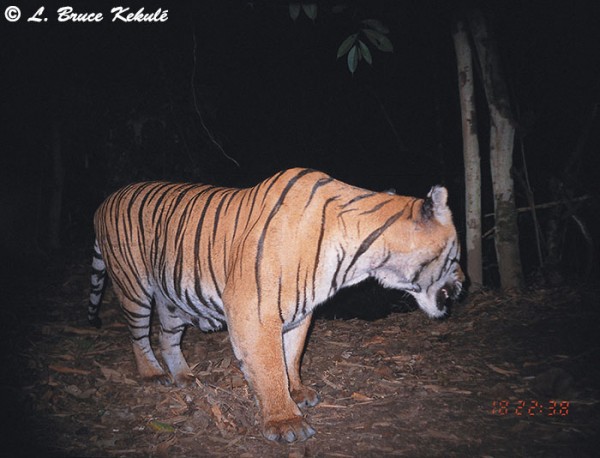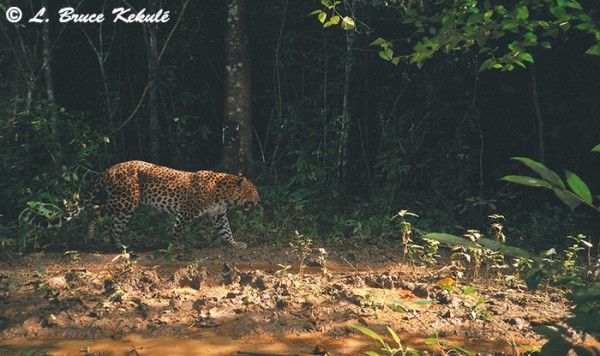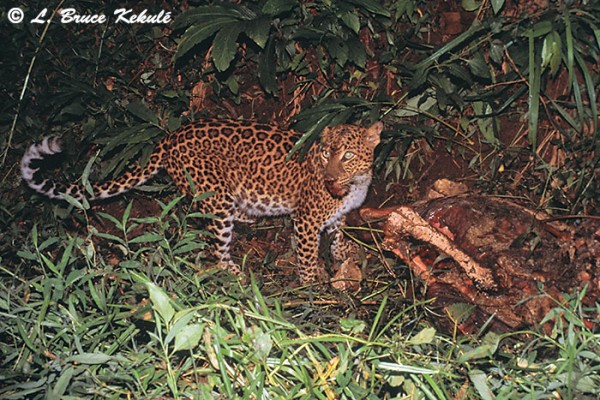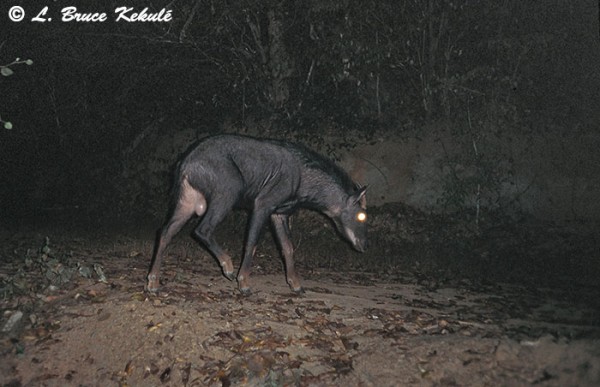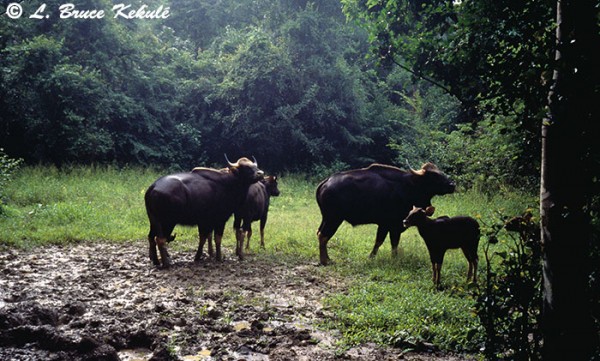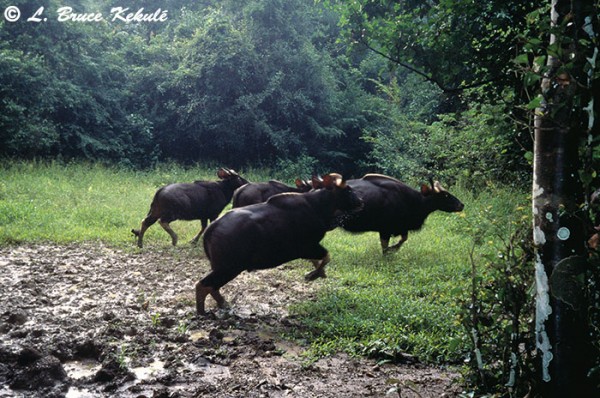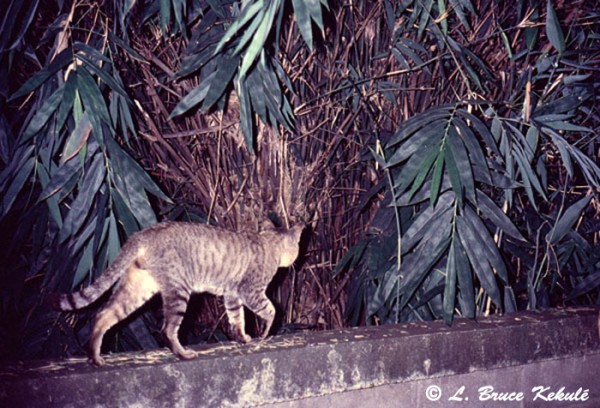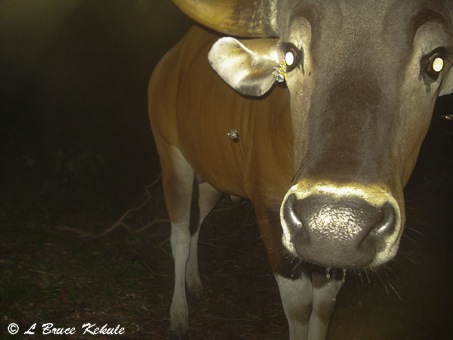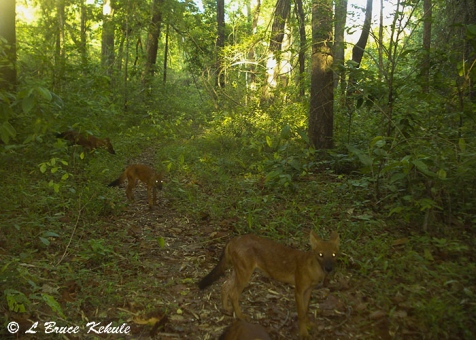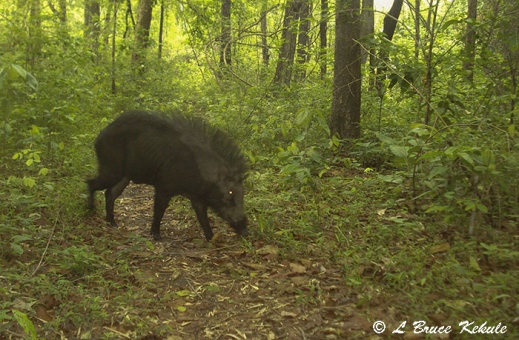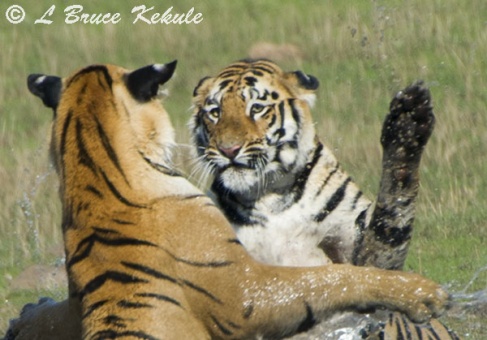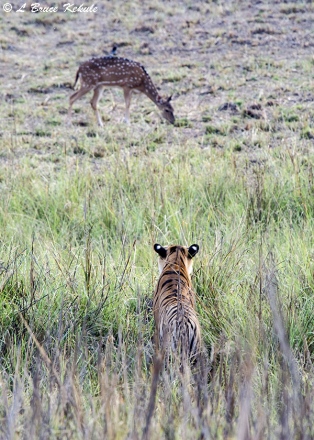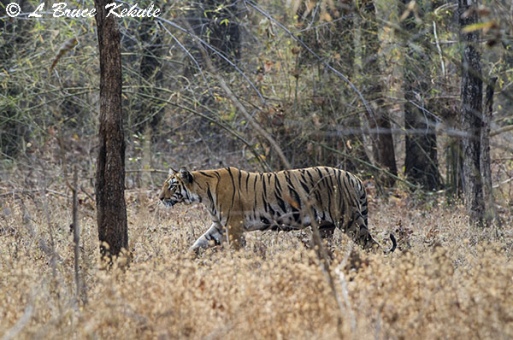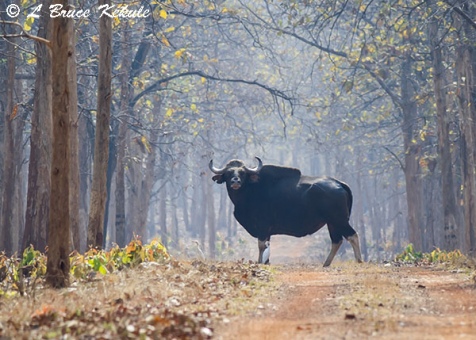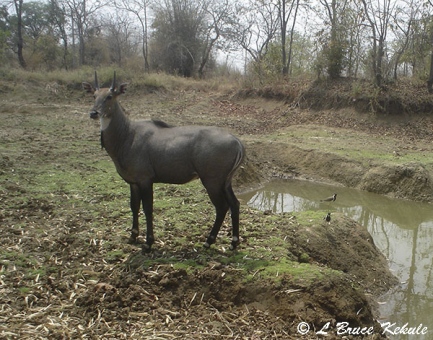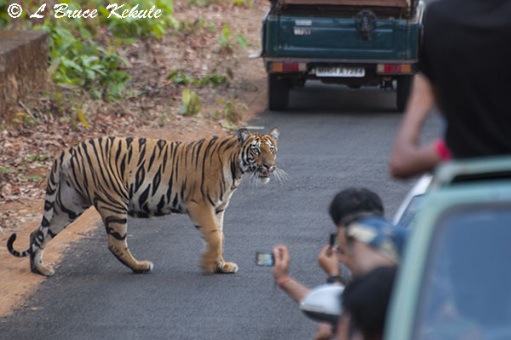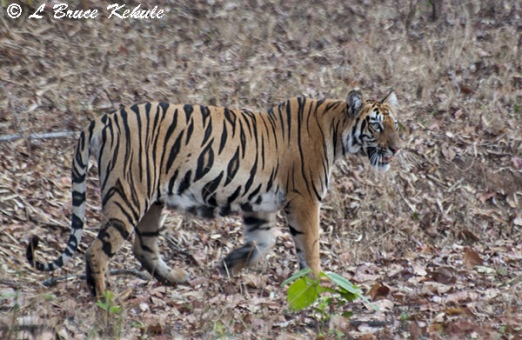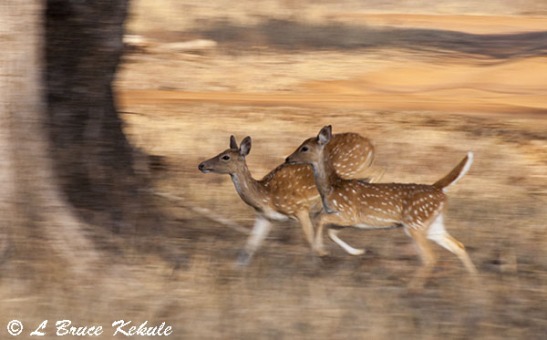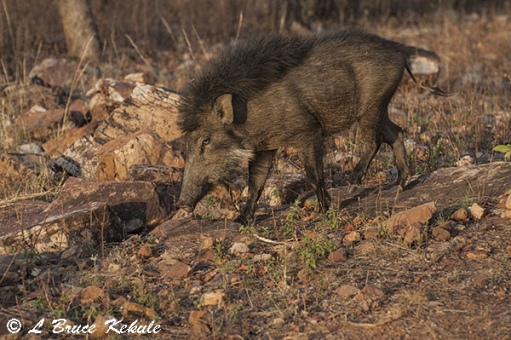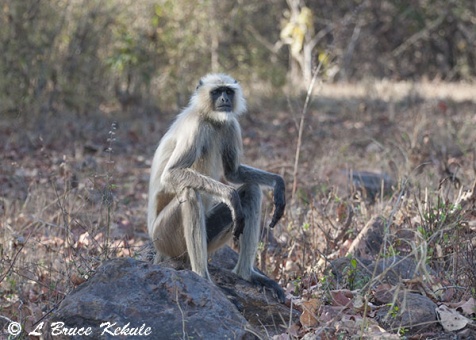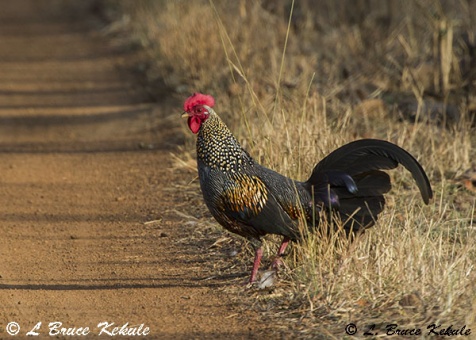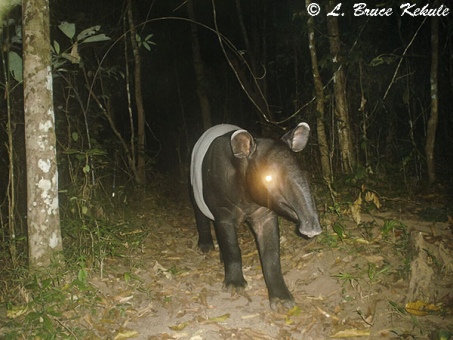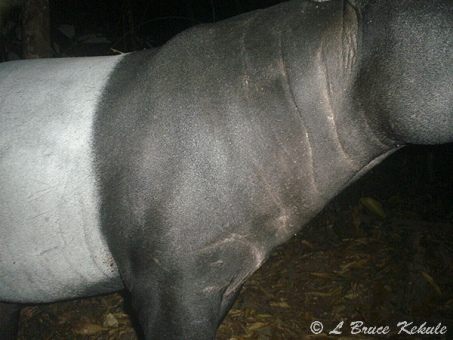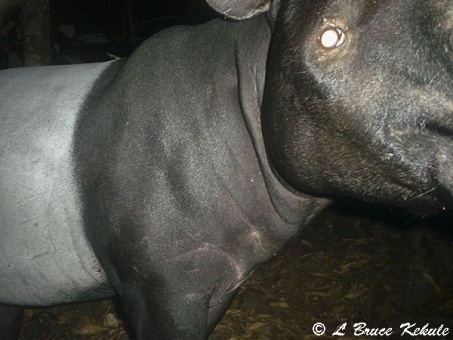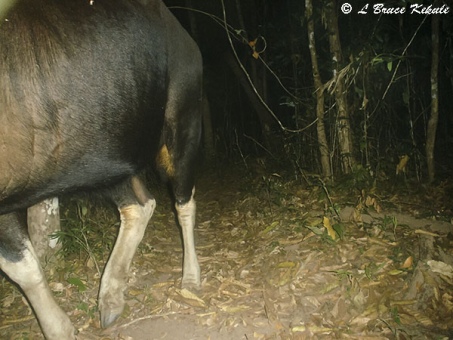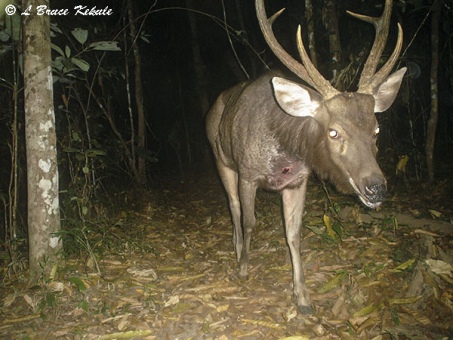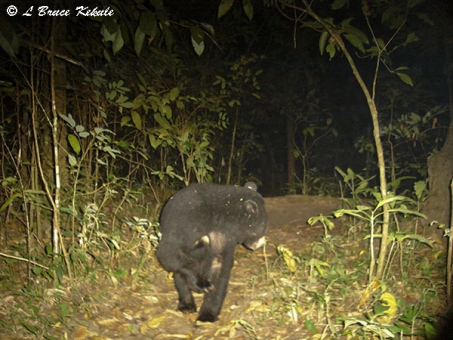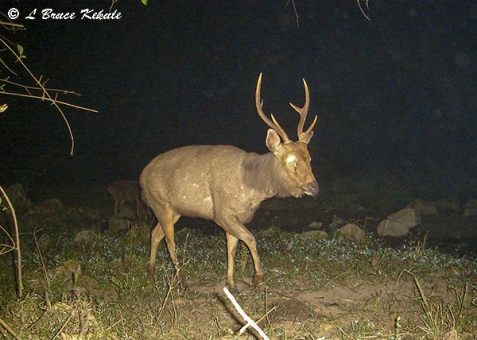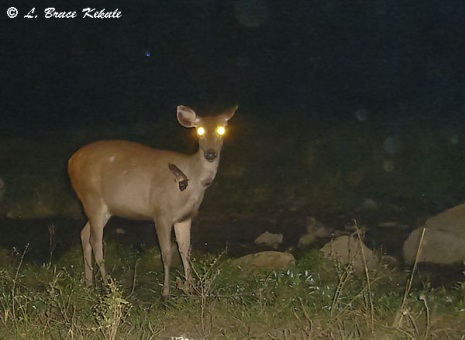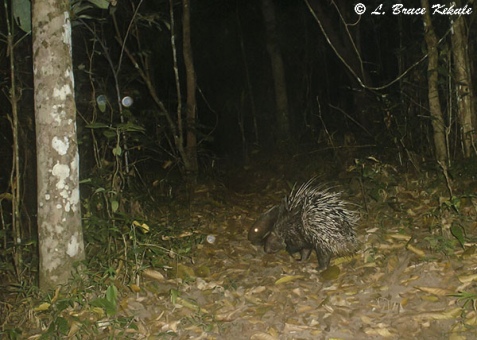Posts Tagged ‘gaur’
India’s ‘Big Six’: Majestic creatures thriving on the sub-continent…!
A photographic tour in three national parks with some pretty amazing animals
A tigress on the run in the grassland at Dhikala, Corbett National Park in the northern State of Uttarakhand.
In 2014, I made a decision to visit India once again in search of the most iconic species still thriving in three protected areas in the northeast, central and northern parts of the country. Kaziranga, Tadoba and Corbett national parks and tiger reserves respectively, were chosen for their wildlife biodiversity with the tiger at the top of the list. I visited the three from February 22 through March 16, 2015.
A mature bull elephant with some impressive ivory in Kaziranga National Park.
I wanted to photograph the big six: elephant, rhino, gaur, wild water buffalo, leopard and the tiger. I was extremely lucky encountering all of these amazing animals during this trip. This has definitely left a huge impression on me and is etched in memory. India’s wildlife and protected areas are some of the best places in the world to see Mother Nature’s wonderful creatures.
Male One Horned Indian rhino 10 minutes from the front gate on my first day in Kaziranga National Park.
A century ago, India was teeming with wildlife. There were some 40,000 tigers found here but that number quickly dropped primarily due to habitat loss after World War II when the population really began to surge and forest areas were overcome, and turned into agriculture fields and estates. Hunting on a grand scale was also responsible for the disappearance of the tiger.
Wild water buffalo cow in Kaziranga National Park.
In 2011, there were only about 1,706 tigers left but in 2014 after better methodology and camera trapping, that number increased to 2,226 individuals found throughout the continent. As a result of mass awareness and conservation measures, the tiger population has rebounded showing a remarkable growth of 30% in the past three years. But some scientists believe this number to be inflated and put the amount of tigers around the 2,000 mark.
A bull gaur with an extremely long tongue in Tadoba National Park.
On 22nd of February 2015, I boarded Air India for the 4-hour flight from Bangkok to New Delhi arriving at noon. After a quick hair-raising taxi ride through the city, I got to the hotel spending one night to rest-up in order to catch the next morning’s flight to Gauhati, the largest city in the State of Assam in northeast India. The hustle and bustle through the domestic airport in Delhi is very tight on security as it should be. But once through the x-ray machines, a bit of a breather and a coffee is welcome. You must get there at least three hours early because of the amount of flights leaving, and the thousands of people trying to catch their respective connections.
A female leopard during late morning in Tadoba National Park.
Kaziranga National Park: State of Assam
A young bull elephant in Kaziranga National Park.
I wanted to visit Kaziranga National Park with the objective of finding out why this place is the number one protected area in the world, and my top priority was the Great Indian one-horned rhino, and then on my list was the wild water buffalo, elephant and tiger in that order. I got the big three but the tiger remained elusive.
A water buffalo photographed by my friend Polash Borah.
My newly acquired friends, Polash Borah and Mohammed Nekib Ali, my naturalist and driver respectively were a big help in locating these large mammals. I let Polash use my Nikon D7000 with a brand new Nikon 70-200mm VRII lens, and he got a really nice buffalo shot posted here. I also managed to get some good photographs myself. It was a great trip and I met some very nice people.
A young one-horned rhino up-close. He was a curious fellow wanting to know who we were.
I will be going back to Kaziranga maybe in November of this year when the skies are clear blue and the air is crisp wanting to get some nice scenic shots especially of the wide Brahmaputra River that runs through the park from the Himalayas in the background, and the lush swamps and grasslands after the monsoon rains.
A mature wild water buffalo bull near a waterway in Kaziranga National Park.
Probably the most important fact concerning Kaziranga is that some 80 years ago, there were about 12 rhinos left here. The Government of Assam decided to do something and implemented some serious laws with a ‘shoot-to-kill’ policy on all poachers and illegal squatters, plus an increase of several hundred personnel. At last count, there are 700 rangers and 161 ranger stations to look after a small 430 square kilometer core area, and a 400 square kilometer buffer zone. After a census last year, there are over 2,400 rhino, 1,500 wild water buffalo and 1,200 elephant. Over 120 tiger have been recorded here and prey species also number in the thousands. In my opinion, it is probably the best-protected area in the world…!
Tadoba National Park: State of Maharashtra
A tiger named ‘Maya’ in Tadoba National Park; she is the most famous tigress seen almost everyday.
After four days in Assam, I flew back to New Delhi for a two-day rest and then boarded a flight on March 3 in the morning down to Nagpur further south. Then a two-hour taxi ride was needed to Tadoba National Park and tiger reserve in the State of Maharashtra. Arriving at the lodge in mid-afternoon, a needed rest and some lunch was in order. I did not go out on safari that afternoon because the park is closed on this day.
‘Maya’ up-close as she walked the road marking her territory.
The next morning’s safari netted a beautiful female leopard highlighted by some wonderful back-light. My spirits were up a hundred percent after photographing the spotted cat.
Female leopard jumping in front of our jeep.
Female leopard up-close as she checks her surroundings.
The next morning as we were rolling around the dusty roads, we bumped into a big crowd of jeeps but they were at the far-end of a one-way road. We waited and saw a tiger walk out of the forest near the jeeps but melted back in. The group then moved close to us but the tiger stayed in the forest. My driver Lahu from the Tiger Trails Lodge has been driving for the owner of the lodge for some 35 years, and knew exactly where the big cat would come out. And as sure as the sun comes up everyday, she popped out and walked right in front of us.
‘Maya’, the female tiger queen in Tadoba National Park: This was my last sighting of this beautiful cat.
I did not stop shooting as Maya, (probably the most popular tigress in Tadoba at the moment) walked along the road spraying and marking her territory. My new friend Dr Sundran Rajendra was with me, and the both of us were so elated that we just kept on shooting our cameras. Then time was up and we had to leave the beautiful cat to herself. It was Sundran’s first tiger and he managed to get some very nice shots of the big cat. She came so close I could almost touch her.
Another tigress, named ‘Choti Tara’ fitted with a radio collar snarls at my friend Dharmendra Sharma.
My other friend and naturalist with the lodge Dharmendra Sharma, was in another jeep so I let him use my Nikon D7000 and the new Nikon 70-200mm VR II, and he got some very nice photos of another female named ‘Choti Tara’ fitted with a radio collar. He also got a few nice shots of Maya.
Male tiger named ‘Gabbar’ fitted with a ‘radio collar’ in pretty bad shape.
On my last afternoon safari in Tadoba, I bumped into ‘Gabbar’, a male tiger also fitted with a collar. He got swatted by another male and was in pretty bad shape. But the wheels are in motion to fix him up. I just hope that the squeaky Indian bureaucracy does not wait too long to help this tiger, as he could turn into a cattle killer or even worse, a man-eater. Needless to say, news on Facebook is that he did kill a village buffalo but is OK for the moment, and is being monitored. After four days, I was back on the plane to New Delhi for a two-day rest before heading north to India’s first national park.
Corbett National Park: State of Uttarakhand
A young tigress stalking a herd of spotted deer in the grassland of Corbett National Park.
It takes about four to five hours north of Delhi by taxi through some very congested and dangerous traffic in the State of Uttar Pradesh to get to Ramnagar, a city in the State of Uttarakhand where Corbett National Park, India’s first national Park. It is situated in the foothills of the great Himalayas. I spent the first night at the Forest Department’s lodge at Bijrani, and went on safari that afternoon and then again the next morning.
A golden jackal on the run near the Forest Department’s lodge at Bijrani.
I did not see a tiger but the big cats were around as other jeeps that I bumped into got some nice close-up photos taken with an iPhone. An occupant in one of the vehicles gave me a telephone slide show. I did see a pair of golden jackals early in the morning and then later a small family unit of elephants. One old cow did a mock charge and came within 15 meters but stopped short and turned around going back to her calf. The elephants then faded off into the forest.
Elephants near the Forest Department lodge at Bijrani.
Around 12-noon, we left this section and went over to the Forest Lodge at Dhikala that is the best site in Corbett to see tigers. Near the lodge, there is a grassland savannah that attracts herbivores like spotted deer in great numbers, and of course many tigers come looking for prey. It is said the park has some 200 tigers, one of the highest densities in India.
A herd of more than 100 spotted deer; the prime food source for tigers in Corbett National Park.
On the second morning, we bumped into a young hunting tigress stalking a herd of over a hundred deer. Me, my naturalist Devendra Singh Neui and my driver Rasheed Ali, were the only ones at this location as all the other jeeps from the lodge (about 10 of them) were waiting for tigers by the forest road. She tried several times unsuccessfully to chase down a deer but the herbivores were on to her. I managed to get some really great images in the process.
The tigress on the run after spotted deer not far from the Forest Department’s lodge at Dhikala.
Later in the afternoon, the camp was abuzz with the news that a tiger was in the lower grassland, and after lunch, they all headed that way and waited nearby. When she appeared, the group went wild chasing after her but they all came up short. We hung back and this very smart tiger circled around to avoid them. I saw her one more time slinking in the grass as the light was fading but time was up as I snapped a few last frames. I had a great time here and have vowed to return to this remarkable place…!
The unlucky tiger chasers in the grassland of Dhikala, Corbett National Park.
The trip to Corbett was scheduled on very short notice by my agents Anu Marwah in New Delhi, and Jason Fernandes in Mumbai both wildlife photographers of great standing in India. They are joint owners of Wilderness Uncut (wildernessuncut.com), a company set-up to cater to wildlife photographers, naturalists and bird watchers. Their superb management and arrangements are first class with absolutely no hiccups and they are reasonable priced. It was a great, enjoyable and memorable trip for me. I can honestly say that I need look no further for anyone to help me with any of my up-coming trips to India.
The female tiger in the grassland of Corbett: this was my last sighting of this beautiful tigress.
One point that I must make here! You never get tired of seeing the world’s biggest cat and is one of the greatest predators that ever walked the face of the Earth. My thoughts are always with these felines and their future survival. Unfortunately, the future for the tiger looks dim, as the situation concerning the Asian medicine trade using their bones seems to be getting worse with more and more stories on the net and in the papers about this draconian belief. The biggest culprits are China, Vietnam, Laos and Thailand (Chinese in Thailand) that perpetuate this market. The tiger needs the whole world to stand up to these people and this illicit trade must be stamped out soon but it carries on with impunity. Until action is taken with economic sanctions and other means against the countries involved, this illegal black-market will continue to take the wild tiger into the dark depths of extinction.
Sony A500 trail cam catches gaur bull
A young bull at a mineral deposit in the Western Forest Complex of Thailand
This is my first capture with the Sony A500 DSLR trail cam at this new location. Loads of wild cattle including gaur and banteng plus other large mammals like tiger and elephant come to this deposit for minerals. Unfortunately, the flashes did not go off and I have pulled the unit to change out the sensor (SSII) which has been tripping as if refresh is actuating the cam. I was lucky to get this shot as the rest of the frames are empty. I believe the chip is the old #5 hence the camera is tripping till the card is full and the flashes went dry…The 28mm lens however, seems OK for the large herbivores and carnivores at this setup.
A BIG CAT TRAILHEAD
A Close Encounter: The saga of a charging bull gaur
Gaur: Thailand’s magnificent mega-fauna
A truly close call with the largest bovid in the world…!
A bull gaur camera trapped at the trail-head a week before about 100 meters from where I was charged. Probably the same old bull that tried to kill me…!!
About two weeks ago, I hit the jackpot out of all my 48 years in Thai forests. I was alone and it was raining in the Western Forest Complex. I had just set a Bushnell Trophy Cam set to video at a trail-head where I previously got a big bull gaur, a bull banteng, elephant, black leopard, wild dog, tapir, wild pig and barking deer.
As I was walking in to set a few more traps, I saw some fresh gaur tracks and judging from the size, noted it was a big mature bull. I went in a little bit more and decided to turn back as the bush was really thick and it was getting late.
A mature bull banteng on the trail.
I had gone about 50 meters and all of a sudden, a bull gaur no more than six meters away, snorted at me. I snorted back thinking he would run away. In the next moment, this huge beast punched through the bush with its head down in the classic position to hook bad people and throw me into the trees.
I saw the right horn base for a fraction of a second and it took me another fraction of a second to do the only thing possible and that was to drop down to the left flat on my stomach with my head down. The bull jumped over my legs and then circled around to do more business of trying to kill me.
What seemed like a lifetime, I heard him thrashing around breaking saplings and stamping on the ground some 10 to 15 meters away. A second charge was imminent and could be disastrous if he used his hooves to trample me. Only one thing would save me now.
Banteng bull close-up.
I quickly pulled out my pistol (.45-ACP ‘Para-Ordnance’ alloy frame), loaded it and let off a shot in the air all the while still lying down. After the report a few seconds later, the bull high-tailed it crashing off into the forest behind me. WOW, that was a close encounter and truly a heart-stopper. I stayed on the ground for quite awhile to make sure he was really gone.
In all my years in the forest, I have never been this close to a gaur or had the experience of a charging bull. No telling if this old bovid had been shot and wounded previously by poachers, and that he really hated humans. Or was he just an old guy with a bad temper and considered me a threat when I barked back at him. I will never really know how close I came to instant death…!
Many a Thai hunter has been killed by gaur because they froze in their tracks and just stood there not reacting in time. I have read in several books that the only way to avert death is to drop flat on all fours with your head down, or to have a very large caliber rifle (minimum .458 caliber) on ready. I had a Nikon D7000 and a 70-300 VR lens. I was lucky to be packing a sidearm..!!
A black leopard close-up.
How did I react so fast and survive? I have one man to thank. He is my dear old friend Gordon Young, author of the book ‘Tracks of an Intruder’, a classic tome about hunting in northern Thailand in the 1950s. He talks about the evasive action needed in this urgent situation in a chapter about a man-killer bull gaur in Mae Salak in Chiang Mai, Northern Thailand. I certainly thought of him right after this…!
I feel extremely lucky to have survived this attack and it was absolutely the most exciting experience that I have ever had, bar none! I have been two meters away from a black leopard just outside my blind, and that did not even hold a candle to this charging solitary bull. I certainly did not have time to take a photo.
Maybe being born under the star ‘Taurus’ (May 19th) had something to do with it, or maybe the ‘good old spirits’ of the Thai forests took care of me and pushed me down at the right moment. This incident surely has me thanking my lucky star.
Asian wild dog pack out hunting.
Gaur are wild forest ox and the largest bovid in the world standing 1.7 meters at the shoulder weighing close to a ton for mature bulls with a distinctive dorsal ridge and a large dewlap, forming a very powerful appearance. Cows are only about 10cm shorter in height, but are more lightly built and weigh 150 kilograms less.
These beasts have stout limbs with white or yellow stockings from the knee to the hoof. The tail is long and the tip is tufted to ward-off biting insects. Newborns are a light golden color, but soon darken to coffee or reddish brown. Old bulls and cows are jet black but south of the Istamas of Kra, some take on a reddish hue.
All bovine share common features, such as strong defensive horns that never shed on males and females, as well as teeth and four-chambered stomachs adapted to chewing and digesting grass. Their long legs and two-toed feet are designed for fast running and agile leaping to escape predators. They are gregarious animals, staying in herds of six to 20, or more. A large herd of 50 was recorded in Thung Yai Naresuan Wildlife Sanctuary but that was a long time ago.
Wild boar in the morning.
Due to their formidable size and power, gaur has few natural enemies. Tiger, leopard and Asian wild dog packs occasionally attack unguarded calves or unhealthy animals, but only the tiger has been reported to kill a full-grown adult. Man is their most dangerous adversary.
These herbivores graze on grass but also browse edible shrubs, leaves and fallen fruit, and usually feed through the night. They also visit mineral licks to supplement their diet. During the day, they rest-up in deep shade.
A male muntjac (barking deer) with a serious wound on its hind quarter.
Gaur still survive in some protected areas but are in serious decline. It is now estimated that maybe 1000 remain in Thailand. However, some reserves where gaur are breeding in fairly good numbers allowing them to actually increase in number if there is adequate protection.
These enormous beasts live in herds but also become solitary, primarily the males. But I have also seen and photographed several mature females by themselves. Mineral deposits play a very important role in the lives of these wild cattle as does thick forests and steep mountainous terrain with abundant water resources. Their future depends whether they are protected to the fullest extent. Unfortunately, their beautifully curved horns are highly sought after by poachers and people who covet trophies.
A unarmed researcher a day before the big gaur passed by.
Budgets, better funding, more rangers and personnel are needed now. Transparency is a must with the national parks and wildlife sanctuaries so money is used properly and efficiently, and corruption stamped out completely. Now that will be a tough nut to crack. It is hoped this draconian situation will change, so the Kingdom’s natural heritage and the majestic gaur will continue to survive in today’s world.
Additional photos of gaur:
My first encounter with a bull gaur some 15 years ago.
The older bull being chased by a younger one.
Another old bull gaur at a waterhole.
A single gaur cow at a mineral deposit.
Gaur herd including a bull, cows and three calves.
A gaur herd including two banteng in Kui Buri National Park.
A bull gaur track on the right and cow track above.
Tadoba Andhari Tiger Reserve – Nine tigers in seven days
A dream come true: Central India’s top protected area for tiger sightings
Tiger sisters sparring in Tadoba Andhari
Same tigers facing off in the lake.
When the tiger evolved in southern China some two million years ago, the species radiated out, north to Siberia and west to the area around the Caspian Sea. The Himalayan mountain range prevented them from moving south into Nepal and India.
Tiger male by the road early one morning.
From China, it moved through Indochina on down the Malay Peninsula via the now submerged Sunda landbridge to Sumatra, Java and Bali in Indonesia. From there the striped cat moved west through Burma to the Indian sub-continent. The Bengal tiger is the second largest after the Siberian species.
A breeding pair in the northern section.
A century ago, there were more than 100,000 tigers throughout their range and India had about 40,000 at that time. Now, it is estimated that maybe 3,200 of these magnificent predators are left in the world with some 2,000 thriving in India and Nepal.
Tiger cub stalking a spotted deer by the lake.
The Indochinese species is just hanging on with about 250 in Thailand and another 250 in Malaysia. Sumatra has about 400 tigers. The Chinese, Caspian, Balinese and Javan tigers are all now extinct, a sad fact!
Tiger cub in the afternoon.
A internet search revealed that there is one protected area that stands above all the others for tiger sightings in India. Tadoba Andhari Tiger Reserve for some time now has been one of India’s most famous for the ease of seeing and photographing the big cat up-close and personal at times. Tadoba was declared a tiger reserve in 1933 and a National Park in 1955.
Bull gaur on the road in the buffer zone.
A buffer zone was recently added and the total area is now 1,700 sq. kilometers. Many other animals are found here including leopard, sloth bear, wild dog, gaur, sambar, chital (spotted deer), nilgai (blue bull), four-horned antelope, muntjac, mugger crocodile plus loads of smaller mammals and birds including the spectacular Indian blue peafowl and the beautiful grey jungle fowl.
Chital stag on the run being chased by wild dogs.
Overlooked by tourist until recently, this forest is situated in central India in the Maharashtra state about 700 kilometers north of Hyderabad. It is split into two parts, north and south. Only 20 percent is now open to the public, and the other 80 percent off-limits to everyone except forest officials after a Supreme Court decision last year in September. The court wanted to close all of the tiger reserves but an outcry from the people was heard and many parks now have only limited access.
Sloth bear near the lake.
Arrangements to travel like visas, air tickets and lodge bookings were arranged and I took off on Thai Airways to Hyderabad on April 4th, arriving at 1:00pm and then undertook a nine-hour taxi ride to the sanctuary. It was scary, to say the least after we got lost in rural India for a short while. The taxi driver finally got back on track and we arrived at the sanctuary at noon.
Wild dogs resting in an evergreen stream bed.
Lunch was served at the Tiger Trails Jungle Lodge situated five-minutes from the front gate of the reserve that would be my home for the next nine days. The food, lodging and service is excellent, and well worth the expense to get there. The closest city is Nagpur only two hours by road and is serviced by daily flights.
Nilgai (Blue Bull) antelope camera trapped near the Tiger Trail Jungle Lodge.
In the afternoon at 3pm, I made my first safari in a ‘Maruti’ jeep (Suzuki) with a naturalist from the lodge, a tour guide and a driver. We got a glimpse of a tiger as the sun was going down. The next day at daybreak, we went south to a lake in the interior. It was reported that four female tiger cubs, and a mother and father were sighted almost everyday in the area.
Tiger cub on the road among the tourists.
We arrived, as did many other jeeps, and we sat in the cool morning waiting for the family to arrive. At 9:30am, the first cub came out of the deep forest across from us and walked past submerging itself in the water to cool off. Then another cub arrived from the other side and they both joined up, and began sparring and facing off. I was ready with my Nikon D3s and a 200-400mm VR lens on a monopod catching the pair in mid-air as seen in the lead photo.
Tiger cub checking out a Tadoba forest official.
The next morning after only five minutes from the gate, we bumped into a male tiger 50 meters from the road out in the open grassland sleeping. Shortly thereafter, he woke up and posed for me. Then we moved to the lake and a cub walked past our jeep about three meters away. We saw tiger everyday except for Tuesday when the park is closed. I however, got a huge gaur bull in the buffer zone next to Tadoba shown here.
Tiger cub emerging after a late afternoon nap.
In the northern section, there is a breeding pair of tigers also shown in the story. They should produce a nice litter that will be an attraction for this place sometime late this year. The four cubs at the lake should disperse very soon. There are many other mature tigers and cubs throughout the sanctuary and at last count, there are about 75 individuals in the park and buffer zone.
Tadoba’s rock pantheons along the road in the tiger reserve.
Tadoba has a rich history that goes back to the 17th century. Once upon a time, dynasties of Gond Kings ruled this part of the Deccan plateau. When the kings traveled through the area, the message of his arrival would be transmitted by an engineering feat. There were rock pantheons erected every hundred yards, which had perfectly aligned tops. Over these were drawn inter-connected ropes which rung a bell at the end. The soldier just tugged on the rope and the bell would ring 50 kilometers away, signaling the approach of his majesty. Many of these rock pillars are still standing seen in the story.
Chital female posing near the road.
Like most things, my safari finally came to a close. I left the lodge at mid-day and dreaded the long taxi ride back to Hyderabad but we eventually arrived at the airport at 9pm. The driver pulled through and got me there in one piece. Then it was a bit of a hassle getting through customs and immigration as security is tight but once through, I had a chance to relax and get something to eat. I boarded the plane for the short three and half hour flight and before I knew it, was home back in Bangkok.
Chital on the run being chased by wild dogs.
India has many problems with poachers and encroachment. Two national parks, Sariska and Panna, had all their tigers poached in a short period of time. As long as there is a market for wildlife parts, the trade in these will continue to carry-on with impunity. However, the government has already reintroduced tigers to these parks but it could take a long time for them to recover fully.
Young sambar stag with tiger claw marks.
Tiger skin, bones, organs and even whiskers are sold in a million-dollar black market to Chinese, Vietnamese and Tibetan buyers. It is heartbreaking that barbaric wildlife traffickers have the audacity to trade the tiger and other animals in bits and pieces, by the gram and kilo.
A mature sambar stag with some serious battle scars.
If you want to see a tiger in the wild, head to India which offers the best opportunities to view the striped predator. There are many tiger reserves and depending on luck, one may bump into one. But Tadoba is at the top of the list for sightings. I definitely will be heading back to this amazing place and hopefully in the near future, more areas will be opened up.
A wild pib in Tadoba.
Unfortunately, Thailand could never offer this wildlife spectacle as the tiger and other Asian creatures have been persecuted for so long making these animals extremely wary which has made sightings rare. But it is still possible in places like Thap Lan and Pang Sida in the northeast, Kaeng Krachan and Kui Buri in the southwest and over in the western protected areas like Sai Yok and Erawan national parks to bump into one.
A gaur in bamboo not far from the road.
I have been working in Huai Kha Khaeng Wildlife Sanctuary for more than 15 years, Thailand greatest tiger sanctuary, and have only seen and photographed one male tiger. However, there are many tigers in this forest (about 75) as witnessed by loads of camera trap photos that have come forth from researchers and wildlife photographers. Needless to say, we need to look after this and other places that have tigers so that these magnificent creatures may continue to thrive into the foreseeable future!
Additional photos from the safari
Langur monkeys are common by the road
A langur posing close to the jeep.
Indian blue peafowl in the bamboo.
Wild boar on the run.
Indian grey mongoose drinking at a waterhole.
Indian grey jungle fowl by the road.
Grey jungle fowl in early morning.










